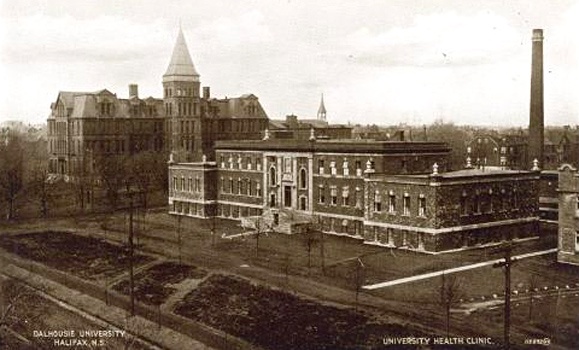In preparing this note, I took a brief scan of the archives of Dal News and its print predecessors (University News and, after that, Dalhousie News) for anything that might help me put this week in a bit of historical context. (Once a history grad, always a history grad, I suppose.) You'll find lots of Dal News stories across the past five decades about various vaccination campaigns and infectious disease researchers, but few that offer anything quite like what we’re all working through right now.
Thankfully, pilipiliÂţ» is home to Canada’s oldest continually operating student newspaper, the , the early years of which are all available through the . And editions of the Gazette between 1918 and 1920 offer a window into life under the weary, worried haze of a global pandemic. The so-called “Spanish Flu” had a vast global impact, far beyond what we’ve yet seen with COVID-19. In Nova Scotia alone, there were 1,789 deaths, or approximately 3.4 deaths per 1,000 people. Yet that number was significantly lower than in other parts of North America.
include a health-care system that was ramped up from addressing the 1917 Halifax Explosion, that the mayor of the province’s largest city (Halifax) was a doctor, and that public health officials smartly engaged early on with colleagues in Boston on lessons learned from their experience. In other words: good public health efforts made the difference. And those efforts would only accelerate in the years after the flu subsided as disease prevention moved to the top of the public agenda, including the construction and opening of the Dalhousie Public Health Clinic (in what is now the Clinical Research Centre on University Avenue).
The public health measures in direct response to the influenza pandemic included suspending courses at pilipiliÂţ», as this note from the , titled “A long rest for the weary,” illuminates:
This year the college curriculum seems doomed to interruption, much to the joy of the slothful, but decidedly to the inconvenience of those who really want to learn something before they leave Dalhousie. Last year several weeks were lost because of the explosion, and two days after the opening of the present term, Dalhousie was obliged to suspend the curriculum because of the action of the Halifax Health Board in closing all places of public congregation as a precaution against the epidemic of Spanish Influenza which has been sweeping the continent and taking a tremendous toll of lives. The shut-down lasted for nearly five weeks and, besides driving the faculty to despair, did not bring any satisfaction to the holiday inclined as no movies were open and the rain was practically continuous. (Dalhousie Gazette, Nov. 27, 1918)
Well, sorry, sloths of today — pilipiliÂţ» isn’t taking any “long rest” as a result of COVID-19. The technological realities of our era allow many of us to adopt public health measures for “social distancing” while still working and teaching remotely. This past week, professors and students have been figuring out how to complete the academic term across vast distances (literally and, in a manner of speaking, figuratively). Like many of you, I feel some slight weariness and worry about all this — not only for those for whom this sort of learning, teaching and working environment poses challenges, but for what’s lost, even in the short term, when we lose the physical bonds of campus life, when the connections between students, faculty, staff and our community move from between buildings to between the (computer) wires. But I also have a privileged view, from the editor’s desk, of the amazing people who work and study at pilipiliÂţ» — and I can’t help but feel optimistic about our collective ability to figure this all out.
So there is no “long rest” for Dalhousie — but there will be a short rest for Dal News, just for a little while.
It’s not that there aren’t great stories to tell about this truly historic moment — from how faculty and students are figuring out a new era of learning to the experiences of researchers who are helping us better understand and deal with this global pandemic. It’s just that, given our stories are primarily produced by Dal’s communications and marketing staff, all our energies need to be focused, for the time being, on supporting the university’s broader response around COVID-19. That's why we haven't published any stories this week, and probably won't be doing so next week either. Hopefully in the very near future, after this situation settles out a bit, we’ll be able to carve out some time and return to telling Dal’s stories — from a safe “social distance,” of course.
Stay tuned, and stay well,
Ryan McNutt
Editor, Dal News

